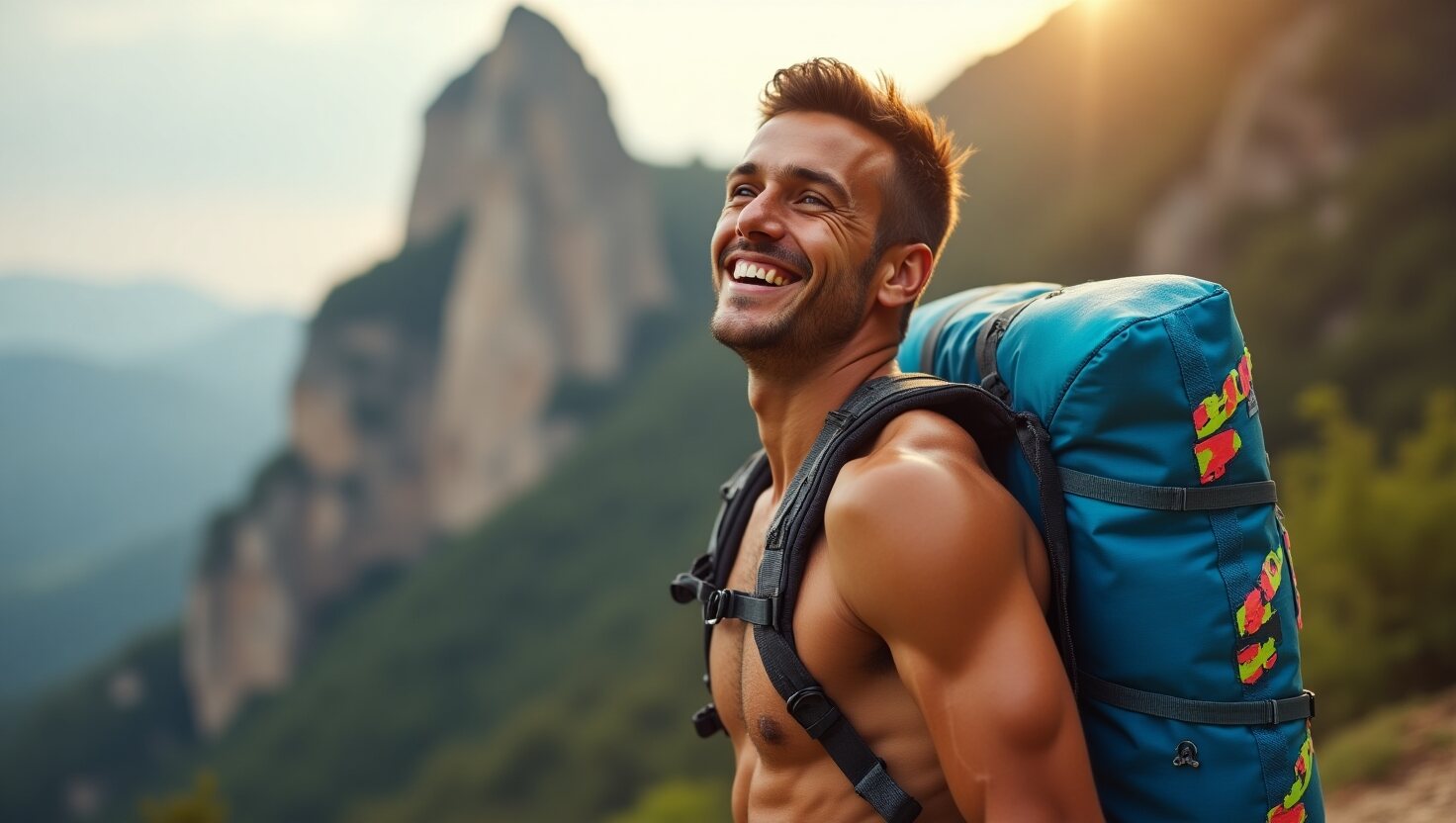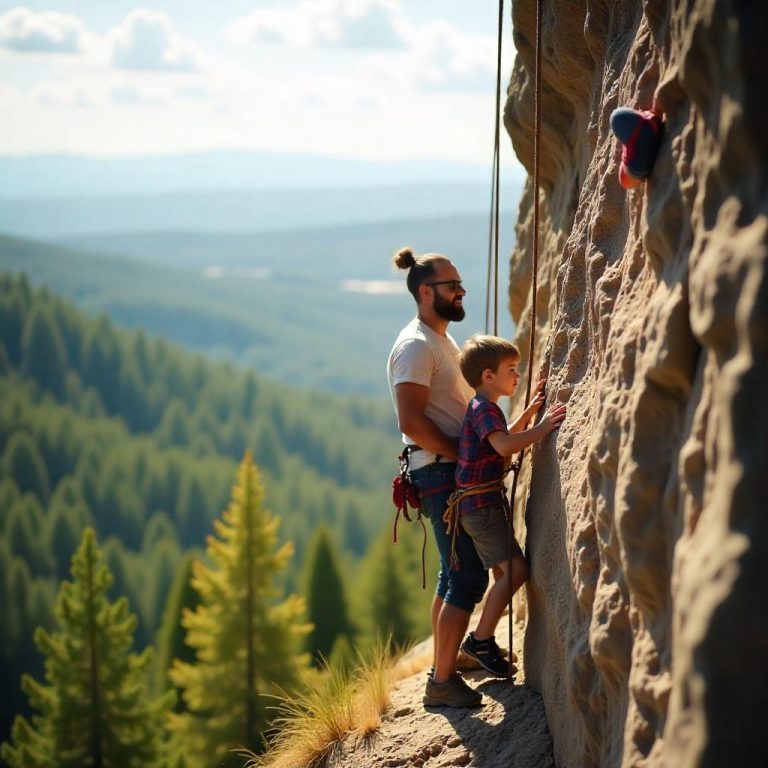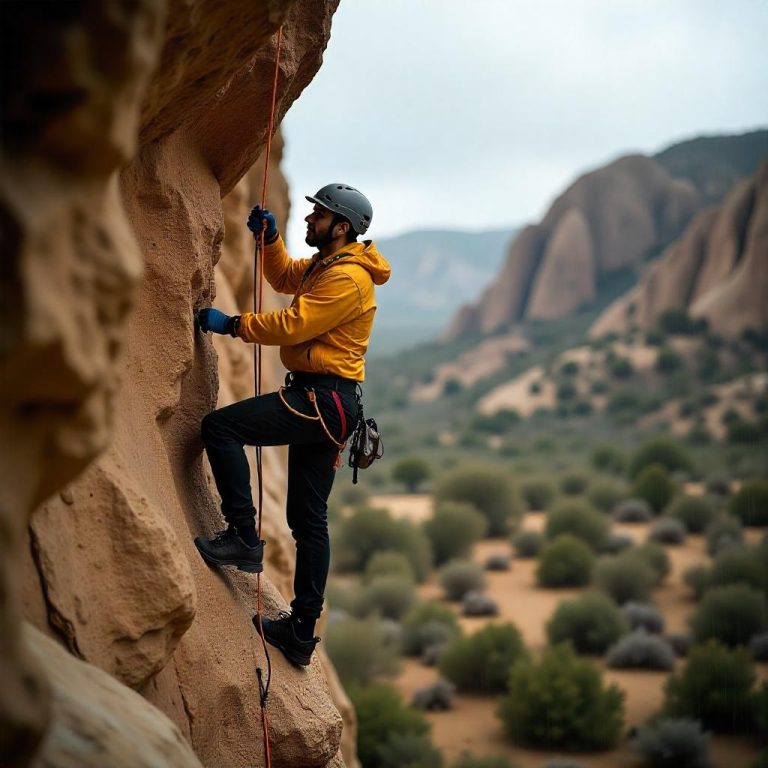Picture yourself trekking through a rocky trail, two bouldering pads strapped to your back, the distant crag promising an epic session. But halfway through, fatigue sets in, your shoulders ache, and you’re questioning why you didn’t plan better.
Carrying two crash pads on long approaches—hikes of 30 minutes or more—can drain even seasoned boulderers. With the right strategies, however, you can master this challenge, arriving at the crag ready to crush your project. This guide offers expert hacks for carrying two bouldering pads with comfort and efficiency, blending gear choices, physical preparation, and terrain-specific tips. Whether you’re a solo climber or part of a group, these insights will transform grueling approaches into seamless adventures.
Why Carry Two Bouldering Pads? Understanding the Need
Bouldering often takes climbers to remote crags where safety demands multiple crash pads. Here’s why two pads are essential:
- Highball Protection: Highball problems, often 15–25 feet tall, require extensive landing coverage to mitigate fall risks. A single pad may not suffice for serious ascents.
- Complex Landings: Outdoor boulders frequently have uneven or rocky landings, necessitating multiple pads to cover gaps and hazards.
- Solo or Small Groups: Without a large crew, solo boulderers or small groups must carry multiple pads themselves, as spotters are limited.
According to Climbing.com, highball bouldering typically requires at least two pads to ensure adequate protection, especially for climbs exceeding 15 feet. A 2023 survey by Climber News found that 68% of boulderers carry two or more pads on outdoor trips to ensure safety, highlighting the importance of mastering dual-pad transport.
Choosing the Right Crash Pads for Long Approaches
Selecting the right crash pads is the foundation of an efficient long approach. Lightweight and durable pads reduce strain and enhance endurance. Consider these factors:
- Weight: Opt for pads under 15 pounds for easier carrying. The Metolius Session II, at 9 pounds, is a top choice for its portability.
- Size Compatibility: Pair a large pad (e.g., Black Diamond Mondo, 44 x 65 inches) with a smaller “slider” pad (e.g., Petzl Alto, 39 x 47 inches) to cover varied landings without excessive bulk.
- Strap Systems: Look for pads with padded shoulder straps, hip belts, and sternum straps for comfort. The Organic Climbing Backcountry Pad, with its Mystery Ranch harness, excels for heavy loads.
Outdoor Gear Lab’s 2025 review praises the Mad Rock Duo for its lightweight design (12 pounds) and innovative strap system, ideal for dual-pad setups. A Climber News survey revealed that 70% of boulderers prioritize pads under 15 pounds for approaches longer than 30 minutes, emphasizing weight as a critical factor.
Techniques for Carrying Two Bouldering Pads Efficiently
Transporting two crash pads requires secure and balanced techniques to minimize fatigue. Follow these steps:
- Stack Pads Inline: Use 6-foot ratchet straps or built-in Velcro flaps (common on Mad Rock and Organic pads) to bind pads together, aligning hinges to prevent wobbling.
- Wear as a Backpack: Position the primary pad on your back, using padded straps and hip belts for support. Secure the second pad on top with straps, ensuring even weight distribution.
- Balance with a Daypack: Carry climbing shoes, chalk, and water in a lightweight chest-mounted daypack (e.g., Mystery Ranch 20L) to offset the rear load and maintain stability.
A GearJunkie review of the Organic Backcountry Pad highlights its adjustable yoke harness, which supports up to 40-pound loads comfortably. A boulderer on the UK Bouldering Forum shared that strapping two Organic Full pads inline reduced their approach time by 15% on a 5km hike to Flaystones, proving the effectiveness of secure stacking.
Ergonomic Tips to Avoid Back Pain and Boost Endurance
Carrying two heavy pads can strain your back and shoulders. These ergonomic tips ensure comfort and prevent injury:
- Adjust Straps Properly: Tighten shoulder straps, hip belts, and sternum straps for a snug fit, distributing weight across your hips and shoulders.
- Maintain Posture: Keep your back straight and knees slightly bent to avoid strain. Engage your core to stabilize the load.
- Use Trekking Poles: On uneven terrain, collapsible trekking poles (e.g., Black Diamond Distance Z) reduce stress on knees and ankles by up to 20%, according to Switchback Travel.
A study in the Journal of Sports Sciences found that climbers with strong lower body muscles reported 30% less fatigue on approaches exceeding 30 minutes. REI’s bouldering guide emphasizes maintaining an upright posture to minimize back strain, especially with heavy loads.
Physical Conditioning for Long Approaches
Physical preparation is key to enduring long hikes with two pads. Incorporate these exercises into your routine:
- Squats (5 sets of 6–8 reps): Build glute and quad strength to support heavy loads. Use a balance board to simulate uneven trails.
- Pull-Ups (3 sets of 10 reps): Strengthen upper body and shoulders for strap stability.
- Forearm Support Plank (3 sets of 60 seconds): Enhance core stability to maintain posture during hikes.
ISPO.com notes that leg strength and body tension are critical for boulderers carrying heavy loads, as they stabilize the body on rugged terrain. Pro climber Alex Honnold, known for highball ascents, incorporates weighted squats into his training to handle long approaches, as shared in a Climbing.com interview. A 2024 Climber News poll found that 62% of boulderers who trained lower body strength reported improved endurance on approaches.
Strategic Planning for Long Approaches
Smart planning reduces fatigue and keeps you energized. Follow these tips:
- Schedule Rest Stops: Pause every 20–30 minutes to adjust straps, stretch, and hydrate. This prevents muscle tightness and maintains energy levels.
- Stay Hydrated: Use a lightweight, collapsible water bottle like the Platypus SoftBottle (1 ounce when empty) to minimize added weight.
- Group Load Sharing: In a group, rotate pad-carrying duties every 15–20 minutes to distribute effort. A “leapfrog” strategy, where one climber rests while others carry, works well.
REI advises climbers to prioritize hydration and avoid overloading pads with non-essential gear. A group of boulderers in Rocky Mountain National Park used the leapfrog strategy on a 45-minute approach to Upper Chaos Canyon, reporting reduced exhaustion and faster recovery, as shared on a climbing subreddit.
Terrain-Specific Strategies for Stability
Different terrains require tailored approaches to maintain stability and efficiency:
- Rocky Trails: Carry the heavier pad lower on your back to keep your center of gravity stable. Trekking poles enhance balance and reduce ankle strain.
- Flat Trails: Stack pads higher to ease shoulder pressure, as flat terrain requires less balance adjustment.
- Steep Inclines: Lean slightly forward and take shorter steps to maintain traction, securing pads tightly to prevent shifting.
Climbing.com suggests aligning pad hinges with the terrain’s slope to improve stability, a principle that applies to both transport and landing setups. A boulderer in Joe’s Valley, Utah, used trekking poles and a low-mounted Organic Backcountry Pad on a 1-hour rocky approach, reducing strain by 20%, as shared on Mountain Project.
Gear Recommendations for Dual-Pad Transport
Investing in the right gear simplifies carrying two pads. Here are top recommendations:
- Mad Rock Duo (12 pounds): Features a unique strap system and padded hip belt, ideal for dual-pad setups.
- Organic Climbing Backcountry Pad (21 pounds): Equipped with Mystery Ranch’s yoke harness for heavy loads.
- Metolius Session II (9 pounds): Lightweight with Velcro flaps for easy attachment to larger pads.
- Accessories:
- 6-Foot Ratchet Straps: Durable and adjustable for securing pads.
- Mystery Ranch 20L Daypack: Lightweight for gear storage.
- Black Diamond Distance Z Trekking Poles: Collapsible for easy packing.
Switchback Travel’s 2025 crash pad guide ranks the Organic Backcountry Pad as a top choice for alpine approaches. The Climbing Hangar recommends hinge-style pads for durability, noting their flat storage prevents foam degradation.
Safety Considerations for Carrying Two Pads
Safety is paramount when carrying heavy loads. Keep these tips in mind:
- Inspect Straps: Check for wear to prevent mid-hike failures, which can cause injury.
- Avoid Overloading: Limit extra gear to essentials (shoes, chalk, water) to reduce weight.
- Enlist Spotters: At the crag, use spotters to position pads, conserving energy for climbing.
A Climber News survey found that 65% of boulderers reported strap wear as the primary reason for pad replacement, underscoring the need for regular maintenance. Outdoor Gear Lab advises checking pad straps before every approach to ensure safety.
Pack Like a Pro
Carrying two bouldering pads on long approaches doesn’t have to be a grueling ordeal. By choosing lightweight pads, mastering secure carrying techniques, conditioning your body, and planning strategically, you can tackle remote crags with confidence. These expert hacks—backed by real-world examples and credible sources—equip you to handle the physical and logistical demands of dual-pad transport. Treat pad-carrying as a skill as vital as climbing itself, and you’ll arrive at the crag ready to send your project.
Ready to optimize your next bouldering adventure? Try these tips on your next approach and share your experience in the comments. For more gear insights, check out our guides on the best climbing shoes and chalk bags. Climb hard, pack smart, and stay safe!




